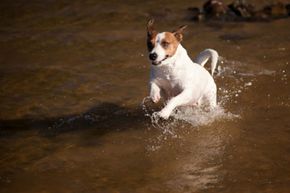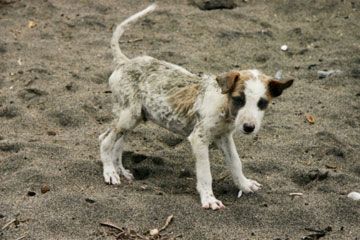When nice weather rolls around, it's time to take your dog outside to enjoy it. All you need is a leash, right? You may need something to scoop up his poop, depending on where you're headed, and you might want to bring some water if you're going on a long hike or if it's a particularly hot day. However, you may be forgetting something important. You're probably wearing shoes to protect your feet and sunblock to protect your skin, but what about your dog's feet and skin?
A dog's foot pads are firm and thick, since they were designed by nature to endure tough surfaces. But durable as they are, a dog's paws are still susceptible to soreness, burns, bruises, blisters and scrapes. Sore foot pads are a common aftereffect of a long day of hiking, walking on hot pavement in the summertime, and traversing ice and snow in the winter. Fortunately, there are ways to prevent this from happening. You can buy special protective footwear for your pooch's feet, for both winter and summer. Winter booties will help keep his paws from getting too cold and also help him avoid getting ice or salt in between his toes. Some are also waterproof. Summer booties can help keep your dog's feet cool and protected from the hot asphalt.
Advertisement
After a long hike or an extended period of time running outside in very hot or very cold weather, be sure to inspect your dog's feet carefully. Remove any debris, ice or snow that you find between his toes and inspect his toenails. If his paws are dirty, wash and dry them thoroughly. You can apply petroleum jelly or a moisturizer just for dog paws if they seem scraped. If they're bleeding, wash the wounds, apply antibiotic ointment and bandage them carefully, leaving the toes exposed if possible. Deep wounds may require a visit to the vet.
Now that we've studied sore dog paws, we'll consider another malady we humans are familiar with -- sunburn. Yep, dogs can get it, too, as you'll discover in the next section.
Advertisement




